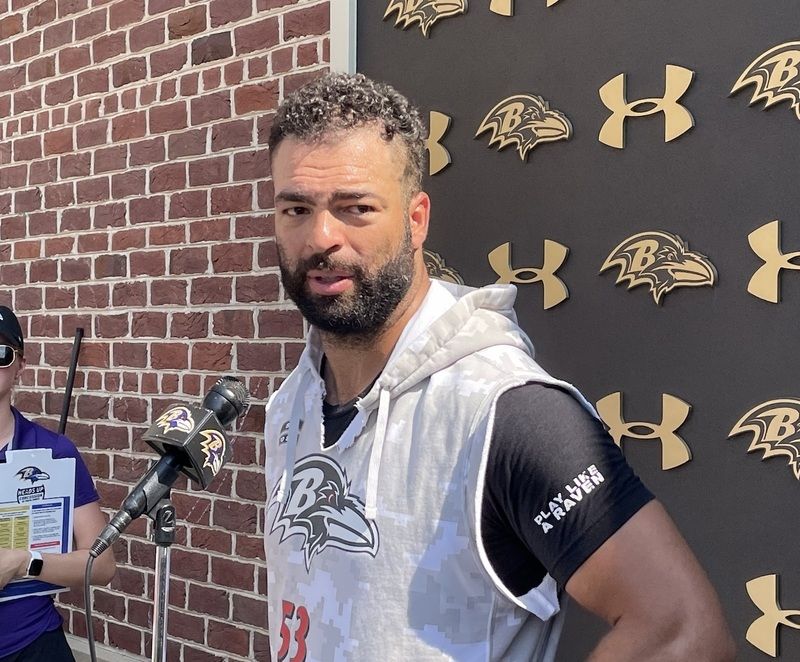Though most attention remains on the official start of free agency at 4 p.m. Tuesday, NFL teams were allowed to begin contacting and entering into negotiations with the agents of pending outside free agents at noon on Saturday.
The NFL has made it clear that a contract cannot be executed with a new team prior to the start of the new league year on Tuesday afternoon in fear of leaks to the media occurring over the weekend, but all this three-day window really does is provide a ceremonial tampering period that’s already existed for the last several weeks.
During this negotiating window, prospective free agents may not visit a club at its permanent facility — or any other location — and may not have any direct contact with an employee or representative of the organization. Only certified agents are officially permitted to communicate with outside teams, but the truth is these discussions have been ongoing, with last month’s NFL scouting combine in Indianapolis long considered a haven for free-agent tampering.
How else do you explain a number of blockbuster deals being announced in the first hour — or opening minutes — of free agency in past years?
In reality, outside teams have already inquired about the likes of upper-tier free agents such as Ravens left tackle Eugene Monroe and defensive tackle Arthur Jones just like general manager Ozzie Newsome and the Baltimore front office have slyly looked into outside free agents that could be a good fit for their 2014 roster. The three-day window set up by the league is merely a perception mechanism to help explain why a top free agent potentially has a new contract and a new team by 4:01 p.m. on Tuesday.
The negotiating window is only designed for unrestricted free agents and does not allow teams to reach out to franchise or transition tag players, restricted free agents, and exclusive-rights free agents. Of course, any free agents who were released earlier this offseason such as linebacker Jameel McClain and fullback Vonta Leach are already free to sign with other teams.
Here is the press release that was published by the NFL regarding free agency earlier this week:
Q. When does the 2014 free agency signing period begin?
A. At 4:00 p.m. ET on Tuesday, March 11.
Q. What is permitted during the three-day negotiating period prior to the start of free agency?
A. Beginning at 12:00 noon ET on Saturday, March 8 and ending at 3:59:59 p.m. ET on Tuesday, March 11, clubs are permitted to contact, and enter into negotiations with, the certified agents of players who will become Unrestricted Free Agents upon the expiration of their 2013 player contracts at 4:00 p.m. ET on March 11. However, a contract cannot be executed with a new club until 4:00 p.m. ET on March 11.
During this negotiation period, a prospective unrestricted free agent cannot visit a club (other than the player’s current club) at its permanent facility or at any other location, and no direct contact is permitted between the player and any employee or representative of a club (other than the player’s current club). If a player is self-represented, clubs are prohibited from discussions with the player during the negotiating period.
Clubs (other than the player’s current club) may not discuss or make any travel arrangements with prospective unrestricted free agent players, their certified agents, or anyone else associated with the player until the expiration of those players’ 2013 Player Contracts at 4:00 p.m. ET on March 11.
The three-day negotiating period applies only to potential unrestricted free agents; it does not apply to players who are potential Exclusive Rights Players or Restricted Free Agents, or to players who have been designated as Franchise Players or Transition Players.
Q. What are the categories of free agency?
A. Players are either “Restricted Free Agents” or “Unrestricted Free Agents.” A Restricted Free Agent may be subject to a qualifying offer. A Restricted or Unrestricted Free Agent may be designated by his prior club as its Franchise Player or Transition Player.
Q. What is the time period for free agency signings this year?
A. For Restricted Free Agents, from March 11 to May 2. For Unrestricted Free Agents who have received the June 1 tender from their prior club, from March 11 to July 22 (or the first scheduled day of the first NFL training camp, whichever is later). For Franchise Players, from March 11 until the Tuesday following the 10th week of the regular season, November 11. For Transition Players, from March 11 until July 22. If the above-listed players do not sign by November 11, they must sit out the season.
Q. What is the difference between a Restricted Free Agent and an Unrestricted Free Agent?
A. In the 2014 League Year, players with three accrued seasons become Restricted Free Agents when their contracts expire at the conclusion of the 2013 League Year. Unrestricted Free Agents have completed four or more accrued seasons. An Unrestricted Free Agent is free to sign with any club with no draft choice compensation owed to his old club.
Q. What constitutes an “Accrued Season”?
A. Six or more regular-season games on a club’s active/inactive, reserved/injured or reserve/physically unable to perform lists.
Q. What could restrict the ability of a Restricted Free Agent to sign with a new club?
A. If he has received a “qualifying offer” (a salary tender predetermined by the Collective Bargaining Agreement between the league and its players) from his old club. He can negotiate with any club through May 2. If the Restricted Free Agent signs an offer sheet with a new club, his old club can match the offer and retain him because the qualifying offer entitles it to a “right of first refusal” on any offer sheet the player signs. If the old club does not match the offer, it may receive draft choice compensation depending on the amount of its qualifying offer. If an offer sheet is not executed on or before May 2, the player’s negotiating rights revert exclusively to his old club. In addition, a player who would otherwise be a Restricted Free Agent may be designated by his old club as its Franchise Player or Transition Player. No Restricted Free Agents were designated as Franchise or Transition players this year.
Q. What determines an Unrestricted Free Agent?
A. A player with four or more accrued seasons whose contract has expired. He is free to sign with any club, with no draft choice compensation owed to his old club, through July 22 (or the first scheduled day of the first NFL training camp, whichever is later). At that point, his negotiating rights revert exclusively to his old club if by June 1 the old club tendered the player a one-year contract for 110 percent of his prior year’s salary. His old club then has until the Tuesday following the 10th week of the regular season (November 11) to sign him. If he does not sign by that date, he must sit out the season. If no tender is offered by June 1, the player can be signed by any club at any time throughout the season.
Q. What determines a Franchise Player?
A. The salary offer by a player’s club determines what type of franchise player he is: exclusive or non-exclusive.
An “exclusive” Franchise Player – not free to sign with another club – is offered the greater of (i) the average of the top five salaries at the player’s position for the current year as of the end of the restricted free agent signing period on May 2; or (ii) the amount of the required tender for a non-exclusive franchise player, as explained below.
Article 10, Section 2(a)(i) of the CBA sets forth the methodology, known as the “Cap Percentage Average,” for calculating the required tender for such a player:
The Nonexclusive Franchise Tender shall be a one year NFL Player Contract for (A) the average of the five largest Prior Year Salaries for players at the position . . . at which the Franchise Player participated in the most plays during the prior League Year, which average shall be calculated by: (1) summing the amounts of the Franchise Tags for players at that position for the five preceding League Years; (2) dividing the resulting amount by the sum of the Salary Caps for the five preceding League Years . . . ; and (3) multiplying the resulting percentage by the Salary Cap for the upcoming League Year . . . (the “Cap Percentage Average”) . . . ; or (B) 120% of his Prior Year Salary, whichever is greater . . . .
If a club extends a required tender to a “non-exclusive” Franchise Player pursuant to this section, the player shall be permitted to negotiate a player contract with any club, except that draft choice compensation of two first-round draft selections shall be made in the event he signs with a new club.
Q. How many Franchise Players and Transition Players can a team designate each season?
A. A club can designate one “Franchise” Player or one “Transition” Player among its potential restricted or unrestricted free agents.
Q. Can a club decide to withdraw its Franchise or Transition designations on a player?
A. Yes. A club can withdraw its Franchise or Transition designation, and the player then automatically becomes an unrestricted free agent, either immediately or when his contract expires.
Q. What is the salary cap for 2014?
A. The salary cap is $133,000,000 per club.
Q. When must teams be in compliance with the cap?
A. At the start of the 2014 League Year, which begins at 4:00 p.m. ET on March 11.
Q. If a team is under the salary cap at the end of a given season, can the team carry over room to the next season?
A. Yes. A team may “carry over” room from one League Year to the following League Year by submitting notice to the NFL prior to 4:00 p.m. ET on the day before the team’s final regular-season game indicating the maximum amount of room that the club wishes to carry over.
Q. What is the maximum amount of room that a club can carry over?
A. One hundred percent of its remaining room.
Weekend negotiating window doesn't amount to much in NFL free agency

Luke Jones
Luke Jones is the Ravens and Orioles beat reporter for WNST BaltimorePositive.com and is a PFWA member. His mind is consumed with useless sports knowledge, pro wrestling promos, and movie quotes, but he often forgets where he put his phone. Luke's favorite sports memories include being one of the thousands of kids who waited for Cal Ripken's autograph after Orioles games in the summer of 1995, attending the Super Bowl XXXV victory parade with his dad in the pouring rain, and watching the Terps advance to the Final Four at the Carrier Dome in 2002. Follow him on social media @BaltimoreLuke or email him at Luke@wnst.net.
Podcast Audio Vault
Right Now in Baltimore
Coloring our holiday world with an Italian feast at Di Pasquale's
Reaching back to his Italian heritage in East Baltimore, Nestor returns to DiPasquale's in Canton to learn about the Feast Of The Seven Fishes and some Highlandtown holiday magic with legendary UMBC soccer coach Pete Caringi and friends of the family.
Twelve Ravens Thoughts following Week 15 win at Cincinnati
Luke Jones offers his latest purple musings after Baltimore's first shutout since 2018.
Izzy running for Baltimore County Executive? Yes, and here's why...
The return of 2nd District Councilman Izzy Patoka to the Maryland Crab Cake Tour at Honey's in Halethorpe provided Nestor a clear view of his key campaign issues and goals in a spring run as a Democratic candidate to be the next Baltimore County Executive.

























